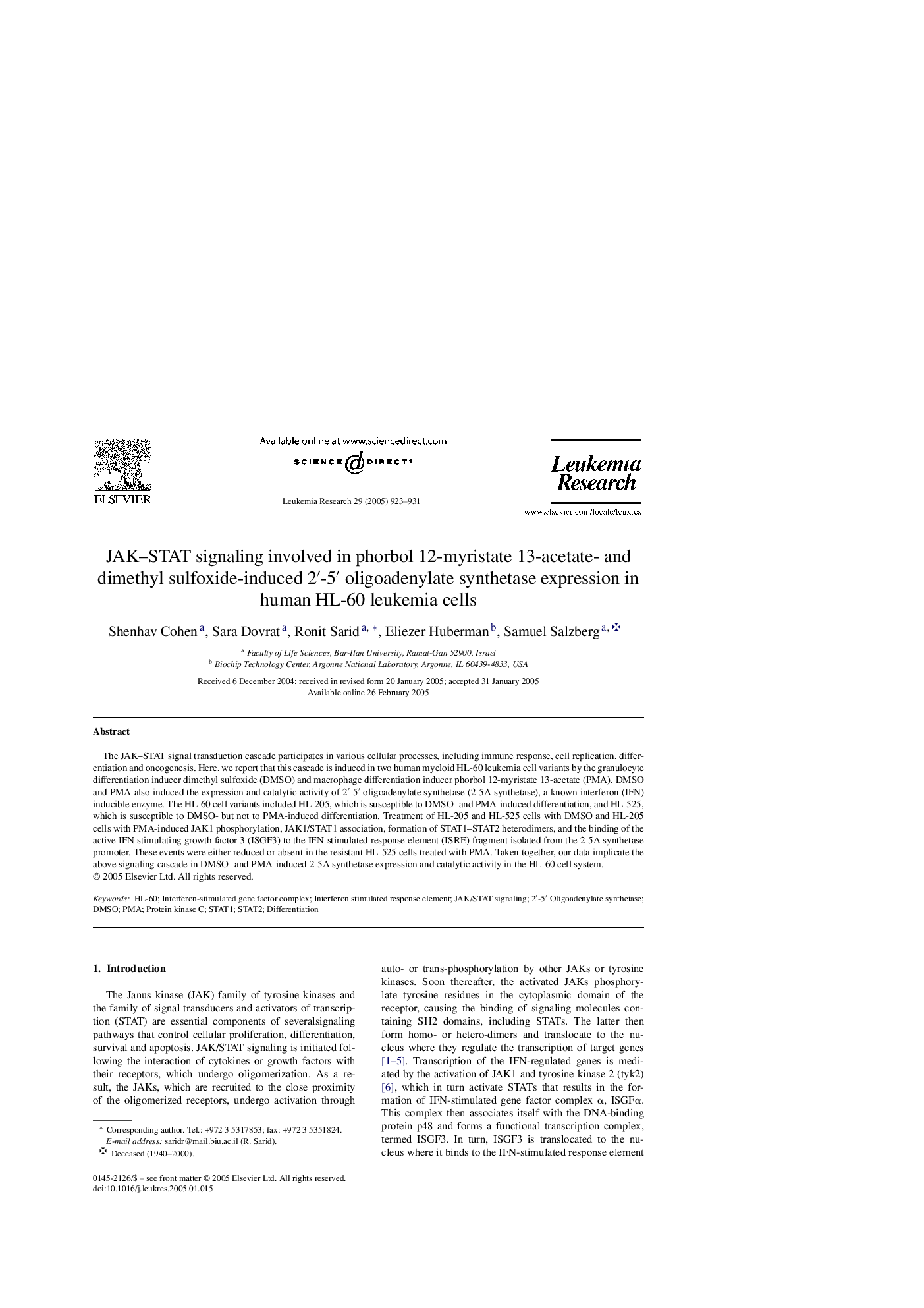| Article ID | Journal | Published Year | Pages | File Type |
|---|---|---|---|---|
| 10909668 | Leukemia Research | 2005 | 9 Pages |
Abstract
The JAK-STAT signal transduction cascade participates in various cellular processes, including immune response, cell replication, differentiation and oncogenesis. Here, we report that this cascade is induced in two human myeloid HL-60 leukemia cell variants by the granulocyte differentiation inducer dimethyl sulfoxide (DMSO) and macrophage differentiation inducer phorbol 12-myristate 13-acetate (PMA). DMSO and PMA also induced the expression and catalytic activity of 2â²-5â² oligoadenylate synthetase (2-5A synthetase), a known interferon (IFN) inducible enzyme. The HL-60 cell variants included HL-205, which is susceptible to DMSO- and PMA-induced differentiation, and HL-525, which is susceptible to DMSO- but not to PMA-induced differentiation. Treatment of HL-205 and HL-525 cells with DMSO and HL-205 cells with PMA-induced JAK1 phosphorylation, JAK1/STAT1 association, formation of STAT1-STAT2 heterodimers, and the binding of the active IFN stimulating growth factor 3 (ISGF3) to the IFN-stimulated response element (ISRE) fragment isolated from the 2-5A synthetase promoter. These events were either reduced or absent in the resistant HL-525 cells treated with PMA. Taken together, our data implicate the above signaling cascade in DMSO- and PMA-induced 2-5A synthetase expression and catalytic activity in the HL-60 cell system.
Keywords
Related Topics
Life Sciences
Biochemistry, Genetics and Molecular Biology
Cancer Research
Authors
Shenhav Cohen, Sara Dovrat, Ronit Sarid, Eliezer Huberman, Samuel Salzberg,
